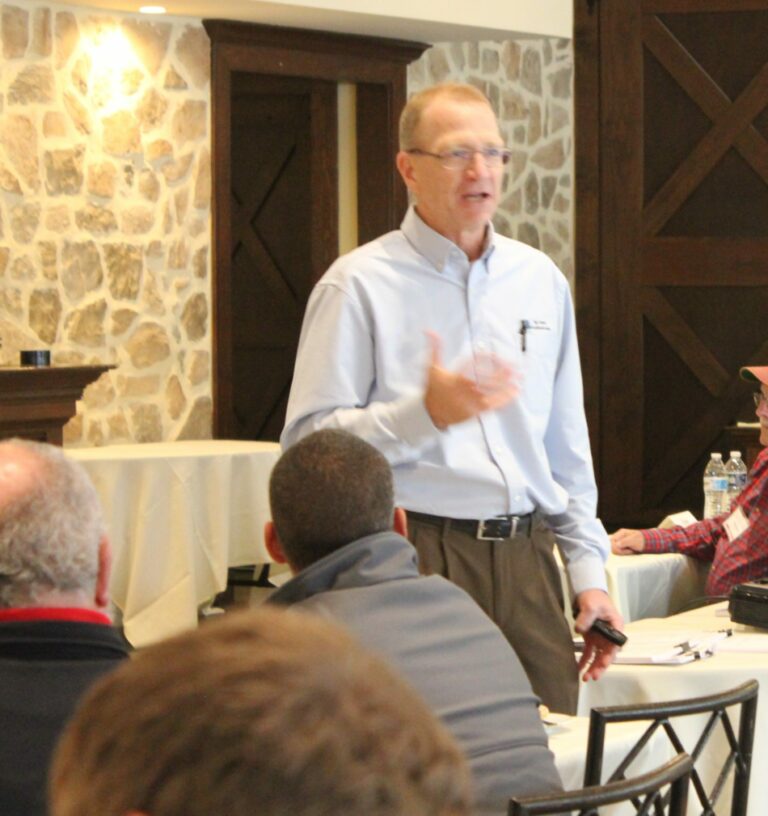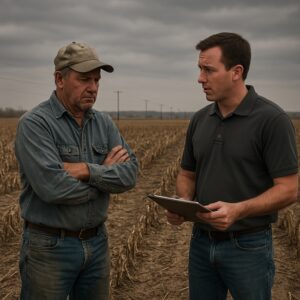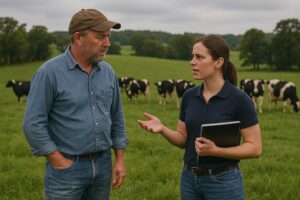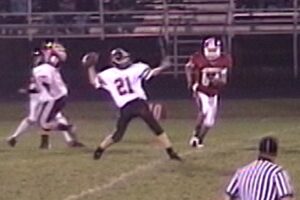Calling on the Wrong accounts!
Start with Who
Simon Sinek is great but wrong! Well, maybe not wrong, just not as clear as I think he could be. If you’re not aware, Simon is a YouTube sensation, writer and motivational speaker who speaks on his topic, “Start with Why”. It’s a great message and I am a big fan. His message is that business leaders often focus on the “What” or the “How” when thinking of their business. For example, “We’re a grain elevator. We originate, elevate, store and ship grain by rail in a three-county area to feed & food companies.” Simon’s message is to change the focus of your thoughts and “Start with Why”. Watch his videos and read his material, because it will give you a new perspective on your business.
However, when it comes to selling farmers and agribusiness buyers, you need to “Begin with Who”.
Previously, we dug into Salesperson Killer #1 – “Disorganization”. Today, we dig into Salesperson Killer #2 – “Calling on the wrong accounts”.
Quick recap: If you are disorganized in your sales territory, you are highly ineffective and will not be able to handle the administration it takes to sell in today’s agribusiness world. You will lack follow-up on prospects and follow-through with customers. Both customers and prospects will begin buying from a salesperson who has the time and remembers to do what they said they would do. Making promises that you don’t keep might get you the first sale, but not the second, third, which makes for a very short agribusiness sales career.
So, now you know the importance of being organized and you actually are organized. You are having great success at signing up accounts, but there’s one big problem. You are not at the top of the company sales charts. What’s going on? As you sit in your company sales meeting and results are posted on the big screen for everyone in the company to see, your name is towards the bottom. Why? You sold more than them. Why aren’t you on stage collecting the big rewards for a great year?
The simple answer is that you sold the wrong accounts. You went out and sold every “two-horse account”. I mean that figuratively and literally. A “two-horse account” would be a small account, based on your company’s version of small. For example, in a geography of 1,000-acre farmers, it would be the 100-acre producers. In a geography of feed dealers and large horse barns, it would literally be a two-horse owner. There is certainly nothing wrong with these accounts and many agribusiness companies are designed to service them. If your company is designed for this type of customer, great! Go to work on them. However, if your entire company is set up to service the 1,000-acre producer, the large horse barn or the feed dealer, you will either go broke or drive yourself crazy trying to sell the “two-horse accounts”. I’ll say it again, there is nothing wrong with these accounts. They need feed, seed, crop insurance, tractors, fertilizer and all the rest of the products. But, not from you and not on your company’s dime.
Why do we sell the small accounts?
- It’s easy: typically, small accounts don’t have a highly trained salesperson like yourself calling on them. So, they are impressed when you actually come out to their farm and balance a ration for 7 cows or draw up an entire agronomy plan for 37.2 acres. You are providing a level of service they may never have seen before. It’s impressive to them and they buy. Ask yourself, “How long did it take me to make that farm call?” Take that number and figure up how many of those sales calls you could make in a year and service them after you sold them. Now take that number and compare it to how many customers of that size it would take to meet your budget numbers. Then ask yourself, “Can I realistically meet my sales budget by selling this account?”
In our two-horse example, a horse eats 5#/day, which equals about 36 bags of feed/year. On a two-horse farm, your newest customer is now buying 72 bags per year. Let’s use a $1.50/bag margin. This means we will make an entire $108/year off this account. Let’s assume your budget is $100,000 of margin per year. This means we would have to sell 926 two-horse farms to meet our budget (100,000/108). Obviously, an unmanageable number. A bit dramatic and unrealistic, but this is what I have seen salespeople do over and over again. If you are debating the budget number I used of $100,000, here’s an easy way to think of it. Take your total income (base, bonus, commissions, etc.) and add 25% to it. That’s the breakeven on you. The extra 25% is the cost of your benefits, expenses, etc. If you haven’t figured a breakeven on yourself, please do so. Trust me, someone in your company is or should be.
- I don’t want to treat the little guy any different than the big guy. That’s just bad thinking. I love Diet Pepsi. If I call their main office and try to buy directly from Pepsi Headquarters, are they going to treat me the same way as the soda buyer from Subway Restaurants? Of course not. I’m going to get a recording or if I’m lucky, maybe a coupon and a hat. Meanwhile, the Subway soda buyer has her call forwarded directly to the national accounts manager’s cell phone. That’s how it should be and I wouldn’t expect anything else. I was treated kindly and respectfully, but I wasn’t treated the same. Do the same for your two-horse accounts. Treat them kindly and respectfully and get them to the right level of service.
- Big accounts scare us: You have to get over this feeling. It might be justified in the beginning of your sales career. You might want to “cut your teeth” on a smaller account. However, once you are knowledgeable on your products and how they can be used for the benefit of your customers, turn that steering wheel when you get to the driveway. You only need 10 seconds of bravery to make that turn. Once you do, you have to make the call. So, just do it. Those big guys plant their crops one seed at a time just like every other producer. With your company resources and your knowledge, you are worth a sales call.
What can I do to change?
- Segment: Sit down with your sales manager and discuss your company’s strategy. Where is it now and where is it going in the future? Is it dealer, direct, distributor, internet? What size of operations are we best at serving? 200 cow dairies, 500-acre growers, etc. Once you have the Who description, you can go into your market and identify them by name, address, and phone. Further reading on the subject specific to Ag sales, see Customer Segmentation – Part 1 and Part 2
- Schedule the big accounts to avoid procrastination: Put them on a list and start contacting them by phone, email, networking, speaking, etc. Put them on your calendar so they actually get done.
- Get a coach: An accountability partner. We naturally get more done when we are accountable to someone. A coach is a great way to help hold ourselves accountable to make the sales calls on those big accounts. If it’s a ride-along coach, they can even help you turn the steering wheel down the driveway of that large prospect.
Hopefully, you gained a new perspective on the top two behaviors that kill more salespeople every year than selling skills could ever kill. Yes, you still need to ask good discovery questions. Yes, you need to ask for the sale with a conversational style close. But before you get excited about learning those, get organized and call on the right accounts
If you found this to be helpful, forward on to someone you know who might also appreciate it.




